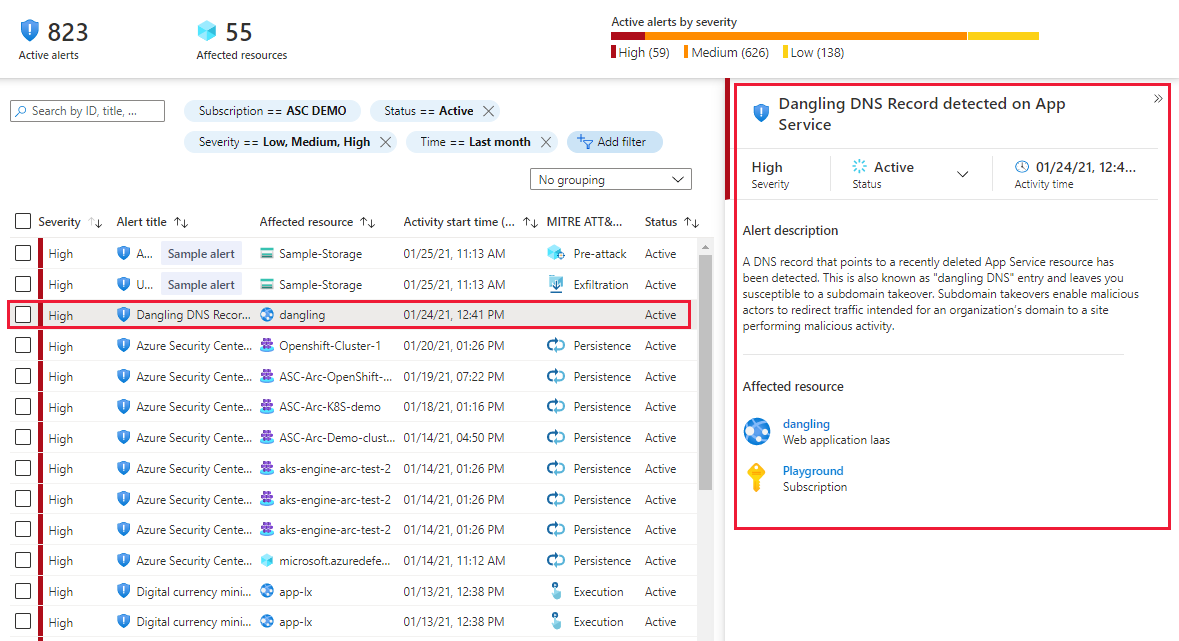Overview of Defender for App Service to protect your Azure App Service web apps and APIs
Prerequisites
Defender for Cloud is natively integrated with App Service, eliminating the need for deployment and onboarding - the integration is transparent.
To protect your Azure App Service plan with Microsoft Defender for App Service, you need:
A supported App Service plan associated with dedicated machines.
Defender for Cloud's enhanced protections enabled on your subscription as described in Enable enhanced security features.
Tip
You can optionally enable individual Microsoft Defender plans, like Microsoft Defender for App Service.
Microsoft Defender for App Service is billed as shown on the pricing page. Billing is calculated according to the total compute instances in every plan.
The supported App Service plans are:
- Standard Service plan
- Premium v2 Service Plan
- Premium v3 Service Plan
- App Service Environment v1
- App Service Environment v2
- App Service Environment v3
Check out Defender for App Service's cloud availability.
What are the benefits of Microsoft Defender for App Service?
Azure App Service is a fully managed platform for building and hosting your web apps and APIs. Since the platform is fully managed, you don't have to worry about the infrastructure. It provides management, monitoring, and operational insights to meet enterprise-grade performance, security, and compliance requirements. For more information, see Azure App Service.
Microsoft Defender for App Service uses the scale of the cloud to identify attacks targeting applications running over App Service. Attackers probe web applications to find and exploit weaknesses. Before being routed to specific environments, requests to applications running in Azure go through several gateways, where they're inspected and logged. This data is then used to identify exploits and attackers, and to learn new patterns that can be used later.
When you enable Microsoft Defender for App Service, you immediately benefit from the following services offered by this Defender plan:
Secure - Defender for App Service assesses the resources covered by your App Service plan and generates security recommendations based on its findings. To harden your App Service resources, use the detailed instructions in these recommendations.
Detect - Defender for App Service detects a multitude of threats to your App Service resources by monitoring:
- the Virtual Machine (VM) instance in which your App Service is running, and its management interface
- the requests and responses sent to and from your App Service apps
- the underlying sandboxes and VMs
- App Service internal logs - available thanks to the visibility that Azure has as a cloud provider
As a cloud-native solution, Defender for App Service can identify attack methodologies applying to multiple targets. For example, from a single host it would be difficult to identify a distributed attack from a small subset of IPs, crawling to similar endpoints on multiple hosts.
The log data and the infrastructure together can tell the story: from a new attack circulating in the wild to compromises in customer machines. Therefore, even if Microsoft Defender for App Service is deployed after a web app has been exploited, it might be able to detect ongoing attacks.
What threats can Defender for App Service detect?
Threats by MITRE ATT&CK tactics
Defender for Cloud monitors for many threats to your App Service resources. The alerts cover almost the complete list of MITRE ATT&CK tactics from preattack to command and control.
Pre-attack threats - Defender for Cloud can detect the execution of multiple types of vulnerability scanners that attackers frequently use to probe applications for weaknesses.
Initial access threats - Microsoft Threat Intelligence powers these alerts that include triggering an alert when a known malicious IP address connects to your Azure App Service FTP interface.
Execution threats - Defender for Cloud can detect attempts to run high privilege commands, Linux commands on a Windows App Service, fileless attack behavior, digital currency mining tools, and many other suspicious and malicious code execution activities.
Dangling DNS detection
Defender for App Service also identifies any DNS entries remaining in your DNS registrar when an App Service website is decommissioned - these are known as dangling DNS entries. When you remove a website and don't remove its custom domain from your DNS registrar, the DNS entry is pointing to a nonexistent resource, and your subdomain is vulnerable to a takeover. Defender for Cloud doesn't scan your DNS registrar for existing dangling DNS entries; it alerts you when an App Service website is decommissioned and its custom domain (DNS entry) isn't deleted.
Subdomain takeovers are a common, high-severity threat for organizations. When a threat actor detects a dangling DNS entry, they create their own site at the destination address. The traffic intended for the organization’s domain is then directed to the threat actor's site, and they can use that traffic for a wide range of malicious activity.
Dangling DNS protection is available whether your domains are managed with Azure DNS or an external domain registrar and applies to App Service on both Windows and Linux.
Learn more about dangling DNS and the threat of subdomain takeover, in Prevent dangling DNS entries and avoid subdomain takeover.
For a full list of the App Service alerts, see the Reference table of alerts.
Note
Defender for Cloud might not trigger dangling DNS alerts if your custom domain doesn't point directly to an App Service resource, or if Defender for Cloud hasn't monitored traffic to your website since the dangling DNS protection was enabled (because there won't be logs to help identify the custom domain).
Next steps
In this article, you learned about Microsoft Defender for App Service.
For related material, see the following articles:
- To export your alerts to Microsoft Sentinel, any partner SIEM, or any other external tool, follow the instructions in Stream alerts to monitoring solutions.
- For a list of the Microsoft Defender for App Service alerts, see the Reference table of alerts.
- For more information on App Service plans, see App Service plans.
